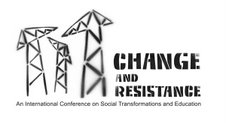Tuning to the rhythm of IT : new temporal synchronizers and their effects on learning in vocational education
Ingrid de Saint-Georges
Home university: University of Geneva
This paper examines changes in learning and knowledge production resulting from Western societies’s tuning to « new synchronizers » of activities. Activities in industrial and post-industrial societies were very much organized by the clock. Information Technologies have created new synchronizers alongside clock time. In many social spheres, social activities are entrained today to the infinitely more rapid beat of computer devices, able to work to the nanosecond. Because of this built-in fast temporality, information technologies (IT), Hassan (2003) argues, have created a “buzz of flickering present” and raised “speed to a metaphysical status”, with consequences for social life as a whole. In the realm of education, in particular, the new synchronizers transform not only how we learn but also what is learned and how knowledge is produced.
The paper seeks to better understand the consequences of tuning to the pace of IT for vocational education. Theoretically and methodologically, it draws concepts from various discourse analytical framework concerned with social transformation and change: the Vienna discourse historical approach (Wodak, 2001), the nexus analysis approach (Scollon & Scollon, 2004) and the frame of social semiotics (Lemke, 2000). Empirically, it examines video-taped interactions documenting the work of apprentices and their co-workers in a Geneva car repair shop.
The study begins by contextualizing briefly the situation examined in its wider societal, historical and economical context. The world of the car industry constitutes a particularly relevant environment to study interrelations between time, work and learning. Its short history merges with that of modern times and the industrial revolution. It has affected modes of life and promoted new forms of organization of work (cfr. fordism, toyotism). It has also been at the forefront of the IT revolution when Fordism as a mode of production started to show signs of decline. The various temporalities associated with these technological changes traverse the local “timescapes” of the workplace examined (Adam, 1998). For example, apprentices are paid by the hour, and clock in and out of work. The corporation imposes strict guidelines regarding the time allotted to car servicing, diagnosis, parts replacement, etc.. Software used for diagnoses connect more and more car mechanics’ work to the IT revolution. In this context, the analysis consists in identifying different synchronizers to which apprentices align and to examine how they affect situated learning. It shows that while learning occurs, the various time pressures existing in the context constraint opportunities for learning and inquiry. It also make clear that while the apprentices and their co-workers develop coping strategies of time management, the interstitial opportunities left for learning and other non-productive temporalities tend to be reduced to a minimum.
On the methodological level, the paper insists on the importance of “opening up the circumference of discourse analysis” (Scollon & Scollon, 2004) and integrating historical sources when seeking to grasp the complexity of even a simple moment of learning. It also insists on the importance of not “flattening time” but analyzing the entrainment effect of various pace-setters (Scollon, 2005) when seeking to understand social issues. It finally questions which temporalities and which time-scales we should work on to “reclaim time” for learning and for critical inquiry.
References
Adam, B. (1998). Timescapes of Modernity. The Environment and Invisible Hazards, London and New York: Routledge.
Hassan, R. (2003). The Chronoscopic Society: Globalization, Time and Knowledge in the Network Economy, New York: Peter Lang.
Lemke, J. (2000). Across the Scales of Time: Artifacts, Activities, and Meanings in Ecosocial Systems Mind, culture and activity, 7(4), 273-290.
Scollon, R. (2005). The rhythmic integration of action and discourse: work, the body and the earth. In S. Norris & R. H. Jones (Eds.), Discourse in action: introducing mediated discourse analysis (pp.20-31). London and New York: Routledge.
Scollon, R., & Scollon, S. W. (2004). Nexus analysis: discourse and the emerging internet. London and New York: Routledge.
Wodak, R. (2001). The discourse-historical approach. In R. Wodak & M. Meyer (Eds.), Methods of critical discourse analysis (pp. 63-94). London: Sage.
Subscribe to:
Post Comments (Atom)

No comments:
Post a Comment